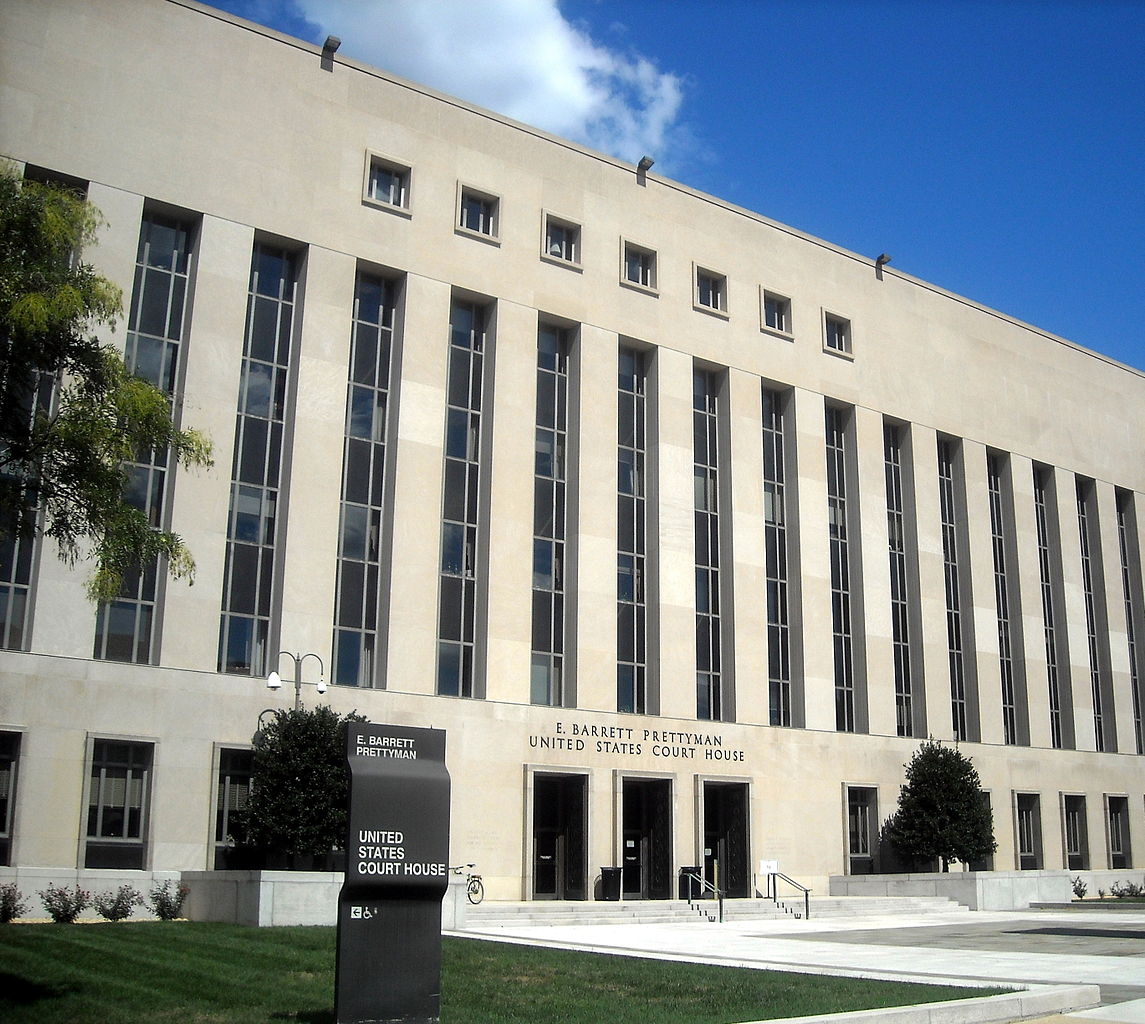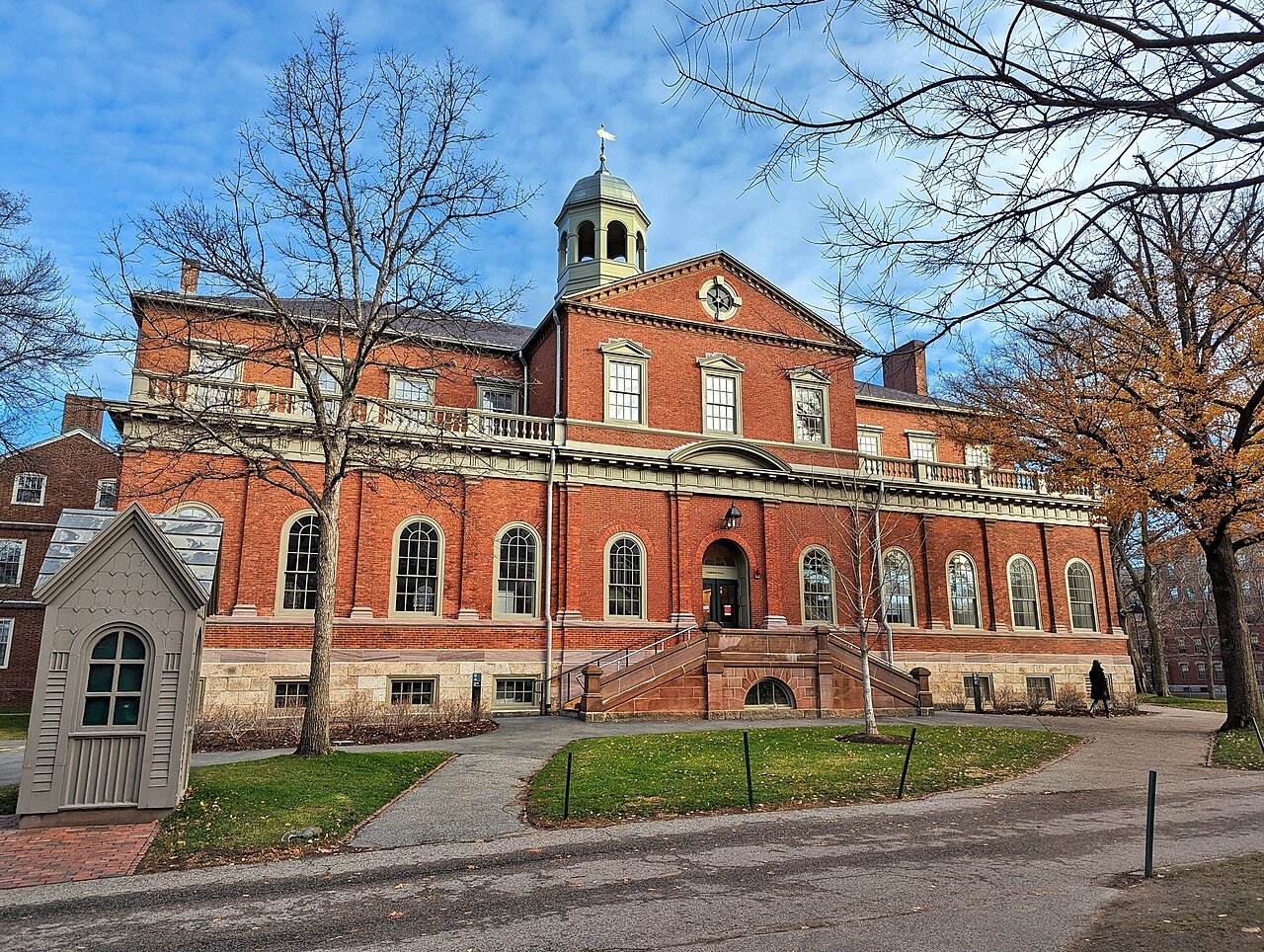The Justice Department’s Petition for Writ of Certiorari in IRAP v. Trump: A Summary
Published by The Lawfare Institute
in Cooperation With

On Friday, the Department of Justice filed a petition for a writ of certiorari in IRAP v. Trump, asking that the Supreme Court review the decision of the U.S. Court of Appeals for the Fourth Circuit upholding the nationwide enjoinment of Section 2(c) of President Donald Trump’s revised travel ban executive order, the provision that suspends immigrant and refugee entry to the United States.
The government also filed two stay applications—one in IRAP v. Trump and another in Hawaii v. Trump, a parallel travel ban case awaiting decision by the Ninth Circuit.
Below we summarize the petition as well as the two stay applications.
Petition for a Writ of Certiorari
The government begins its statement by citing United States ex rel. Knauff v. Shaughnessy and various statutes, including 8 U.S.C. § 1182(f), which together, the government argues, confer on Trump the “broad authority” to suspend or restrict the entry of aliens.
The government does not address the internal DHS memo that the Fourth Circuit relied on and which undermines the national security rationale for the revised executive order and points instead to DHS’s February 2016 exclusion of “recent visitors to Libya, Somalia, and Yemen,” under the Visa Waiver Program. The government then describes Trump’s first and second executive orders, emphasizing that he had acted “based on the recommendation” of members of his Cabinet—Secretary of State Rex Tillerson, Secretary of Homeland Security John Kelly, and Director of National Intelligence Dan Coats. The government further points out that the second order “expressly excludes other categories of aliens that had concerned courts, including lawful permanent residents.” As to standing, the government also emphasizes that the second executive order included “case-by-case waivers” and provided a “nonexhaustive list" of instances when these waiver could be given.
The government ends by chronicling the procedural history of the present suit and the Fourth Circuit’s holding. The Fourth Circuit largely affirmed the district court’s injunction, applying the Establishment Clause precedent Lemon v. Kurtzman and determining that, based on Trump’s public statements on the campaign trail and after election, the executive order had an “improper religious purpose.” The Fourth Circuit determined it was necessary to “look behind” the facially neutral” language of the order and that the plaintiffs were likely to succeed on the merits of their Establishment Clause claim. The Fourth Circuit tailored the injunction only to remove its effect on “the President himself.”
The government also focuses on the three dissents, highlighting Judge Agee’s examination of justiciability, Judge Niemeyer’s determination that the majority’s Establishment Clause analysis “plainly violates” Kleindienst v. Mandel, and Judge Shedd’s declaration that the district court “totally failed to respect” the deference it was bound to give the political branches in national security matters. The government then provides an update on Ninth Circuit litigation, highlighting portions of Judges Bybee and Kozinski’s dissents from Washington v. Trump (the Ninth Circuit’s decision upholding an injunction on the first executive order) and pointing to developments in Hawaii v. Trump, in which the Ninth Circuit recently heard oral argument and is expected to hand down an opinion any day.
In its overview of why its petition should be granted, the government argues that the Fourth Circuit failed to adhere to foundational principles of justiciability and constitutional interpretation and failed to tailor the scope of the equitable relief.
Justiciability
The government explains that Doe #1’s challenge to Section 2(c) is not justiciable because the political branches’ immigration decisions are largely immune from judicial review. Specifically, the government argues, that Congress has forbidden judicial review of visa revocations (consular nonreviewability) and has not authorized judicial review of visa denials.
Next, while acknowledging that the Court has allowed limited judicial review where an immigration policy allegedly violates a U.S. citizen’s constitutional rights (per Mandel and Kerry v. Din), the government argues that this exception does not apply here. Doe #1’s asserted two grounds for standing, arguing that the executive order would delay his wife’s entry to the United States and promotes animus towards Muslims. According to the government, the first is undermined by the fact his wife hasn’t yet sought or been denied a waiver. As for anti-Muslim animus, the government asserts that the alleged effect does not stem from a violation of not the plaintiff’s Establishment Clause rights but instead alleges injury on behalf of his wife, who does not enjoy such rights.
The government further argues that because the executive order is silent about religion, it does not expose the plaintiffs to a religious message, and that insofar as the order creates creates feelings of marginalization the Fourth Circuit’s holding on standing creates a circuit split with the D.C. Circuit in In re Navy Chaplaincy, which invites the Supreme Court’s review. As an argument of last resort on standing, the government seeks to narrow standing to John Doe #1, the only plaintiff with a family member allegedly affected by the ban.
Constitutional Interpretation
The government argues that Section 2(c) does not violate the Establishment Clause because it is constitutional under Mandel and Din. It asserts that per the requirements of Mandel, the government presented a “facially legitimate” and “bona fide” factual basis (national security) for its action and that the Fourth Circuit improperly used the “bona fide” requirement to “look behind” the government’s facial justification. The government also argues that the Fourth Circuit misread Justice Kennedy’s concurrence in Din as permitting “a wide-ranging search for pretext.”
The government further argues that the Supreme Court should reject judicial interference into foreign affairs, citing footnote 6 of Judge Bybee’s dissent in Washington v. Trump: the “unreasoned assumption that courts should simply plop Establishment Clause cases from the domestic context over to the foreign affairs context ignores the realities of our world.” The government argues that even if a bath-faith inquiry into consular decisions is permitted and even if domestic Establishment Clause precedent applies in national security situations, Doe #1 still did not make an affirmative showing of bad faith. On the contrary, that the President showed good faith by adding provisions that aided victims of religious persecution.
Lastly, the government criticizes the Fourth Circuit’s use of campaign statements as “impermissible under any legal standard.” Quoting Judge Niemeyer specifically, the government argues that campaign-trail statements are unbounded resources that are shorthand for larger ideas and that relying on them to analyze executive policy has no rational limit. As for the “few post-inauguration remarks by the President and aides” cited by the plaintiffs, the government argues these “do not demonstrate an impermissible purpose.”
Scope of Equitable Relief
Lastly, the government argues that the district court’s injunction on Section 2(c) is overbroad and is not designed to redress the plaintiff’s cognizable injuries as required under Article III of the constitution. Interpreting Section 2(c) as a message of condemnation to Muslim American citizens, rather than aimed at aliens abroad permits any U.S. citizen to seek enjoinment against not only Section 2(c) but also any alleged discriminatory immigration law. Acknowledging that Doe #1 has the strongest claim for standing, the government emphasizes the order’s severability clause.
In closing, the government argues that the Fourth Circuit’s decision requires review and that the Supreme Court often grants review to address interference with executive branch decisions implicating national security or the law of immigration and alien status. The government also asserts that the injunction undermines Trump’s interactions with other nations and creates uncertainty about his ability to protect the U.S. from terrorist threats. In closing, the government appeals to the court to adhere to foundational legal rules notwithstanding the passionate political debate that has surrounded the case:
This Order has been the subject of passionate political debate. But whatever one’s views, the precedent set by this case for the judiciary’s proper role in reviewing the President’s national-security and immigration authority will transcend this debate, this Order, and this constitutional moment. Precisely in cases that spark such intense feelings, it is all the more critical to adhere to foundational legal rules. The decision below departs from those rules, and calls into question the Executive and his authority in a way that warrants this Court’s review.
IRAP v. Trump Application for Stay
The government filed an application for stay of the preliminary injunction upheld by the Fourth Circuit pending review of the petition for a writ of certiorari and pending the Court’s ultimate decision on the merits if review is granted. The government also requested expedited briefing and consideration of the petition.
The government begins by presenting a brief history of the contested order and argues that a stay of the “extraordinary injunction” is appropriate pending the disposition of the petition for a writ of certiorari because there is a reasonable probability that the Court will grant certiorari, that there is more than a fair prospect that the Court will vacate the injunction, and that this injunction would cause irreparable harm to Trump in effectuating his national-security judgment as well a harm to the government and the public interest. At minimum, the government argues, the injunction is overbroad and should be narrowed to address the injury asserted by Doe #1.
Adopting similar language as that in its petition for cert, the government recounts the president’s statutory authority to govern admission of aliens, as well as the process by which admission decisions are made under the broad discretion granted under the INA to suspend or restrict the entry of aliens. The government also presents a procedural history of the present controversy beginning on January 27, 2017, explaining the provisions of the second executive order challenged in IRAP v. Trump, and the history of other litigation in Washington v. Trump and Hawaii v. Trump.
First, the government emphasizes that the case implicates “exceptionally important questions of federal law” that relate to national security interests. Citing the Court’s precedent in granting certiorari related to national security litigation, the government argues that the injunction prevents Trump from protecting the nation, and that the courts below “openly second-guessed” Trump’s judgment. Although the president is not required to disclose his reasons for classifying individuals of another country as a threat, the government explains that when he does, the courts are “ill equipped to determine their authenticity and utterly unable to assess their adequacy.”
The government also argues that the courts below injected themselves into matters of foreign affairs and risked the embarrassment of the U.S. government abroad. Pointing out that Trump, in his address in Saudi Arabia, decried murder of Muslims and emphasized that fighting terrorism is not about different faiths, sects, or civilizations, but rather is a fight against barbaric criminals, the government characterizes the Fourth Circuit’s conclusion that Section 2(c) is rooted in “religious intolerance, animus, and discrimination” as potentially undermining Trump’s ability to conduct foreign relations and protect national security. The government further asserts that the ruling places Trump in an untenable position, because although his statements do not “forever taint” his future conduct, the Fourth Circuit did not provide a pathway to cleanse himself of the taint.
Second, the government contends that a stay is warranted because the government has a far more than fair prospect of prevailing.
Third, the government maintains that the stay should be granted because the injunction causes direct and irreparable harm to government and public interests: “any time a State is enjoined by a court from effectuating statutes enacted by representatives of its people, it suffers a form of irreparable injury.” Injury, the government explains, should not be conflated with the legal merits of the case.
Fourth, the government emphasizes that the vastly overbroad nature of the stay violates the “well-settled rule that injunctive relief must be limited to redressing a plaintiff’s own injuries stemming from a violation of his own rights.” Echoing the arguments in its petition for certiorari, the government states that Doe #1’s asserted injury would be redressed by enjoining Section 2(c) only as it applies to Doe #1’s wife.
Lastly, the government requests that, regardless of whether a stay is granted, review of the petition be expedited.
Hawaii v. Trump Application for Stay
The government filed a substantially similar application for stay of the preliminary injunction issued by the United States District court for the District of Hawaii and now awaiting a decision from the Ninth Circuit. In the event that the Ninth Circuit upholds the injunction, the government also requests a stay pending the filing and disposition of its petition for a writ of certiorari. The government adds that, at a minimum, the injunction “should be stayed to the extent that it goes beyond addressing the entry of Dr. Elshikh’s mother-in-law” (a reference to the individual plaintiff in the case).
Recall that the Hawaii injunction is broader than the Maryland injunction, as it enjoins enforcement of all of Section 2 as well as Section 6 of Trump’s executive order. That includes the temporary suspension of the Refugee Program, the provision reducing the maximum number of refugees who may be admitted to the U.S. in 2017, and multiple provisions of Sections 2 and 6 that deal with internal and diplomatic activities.






